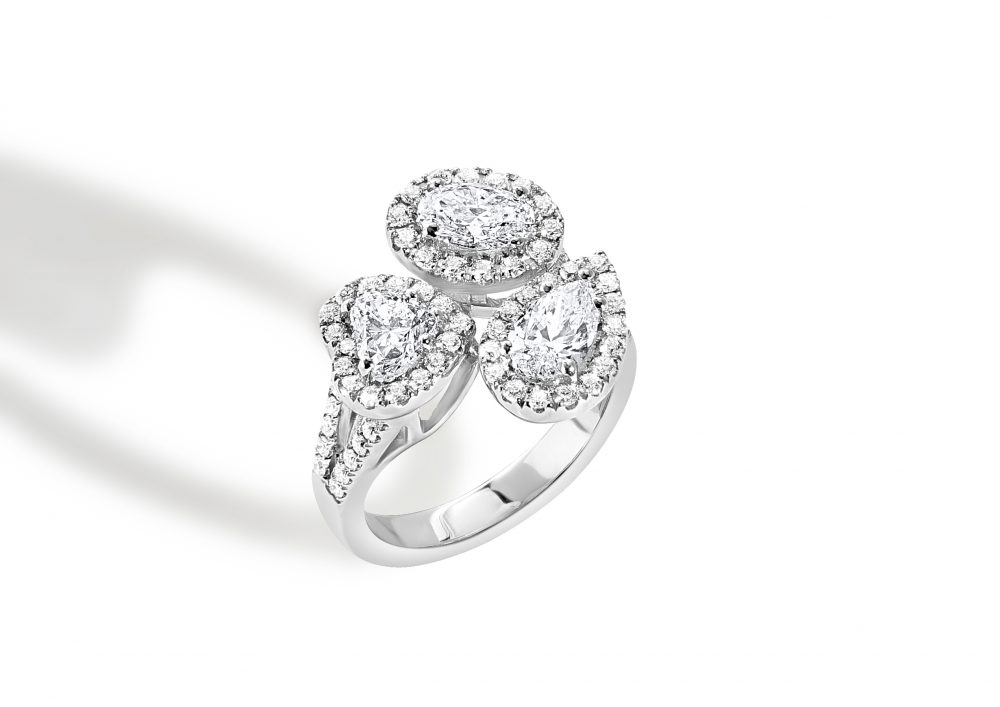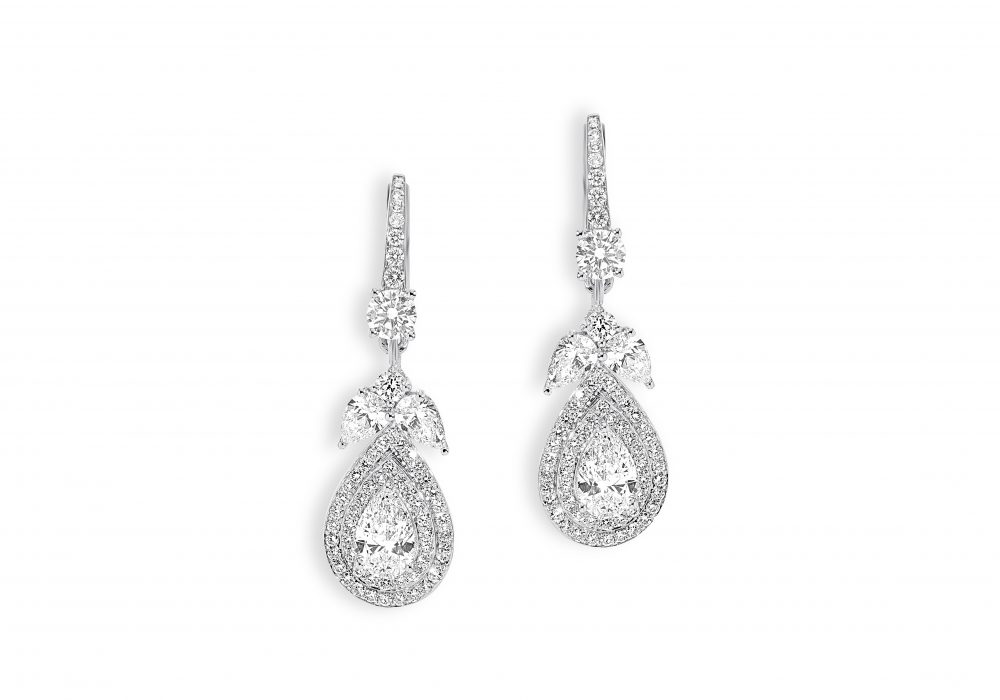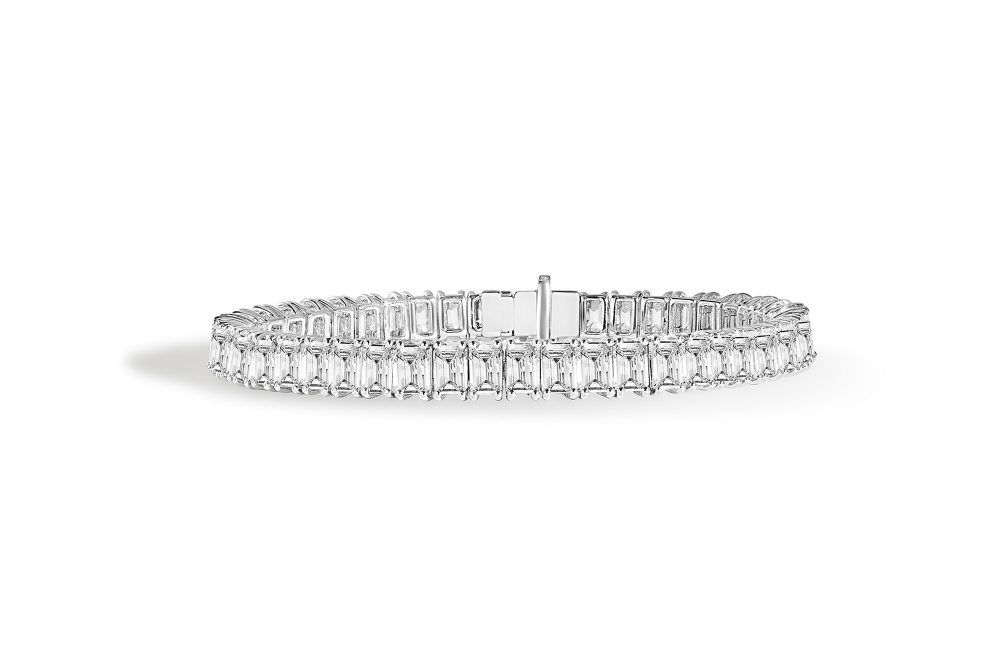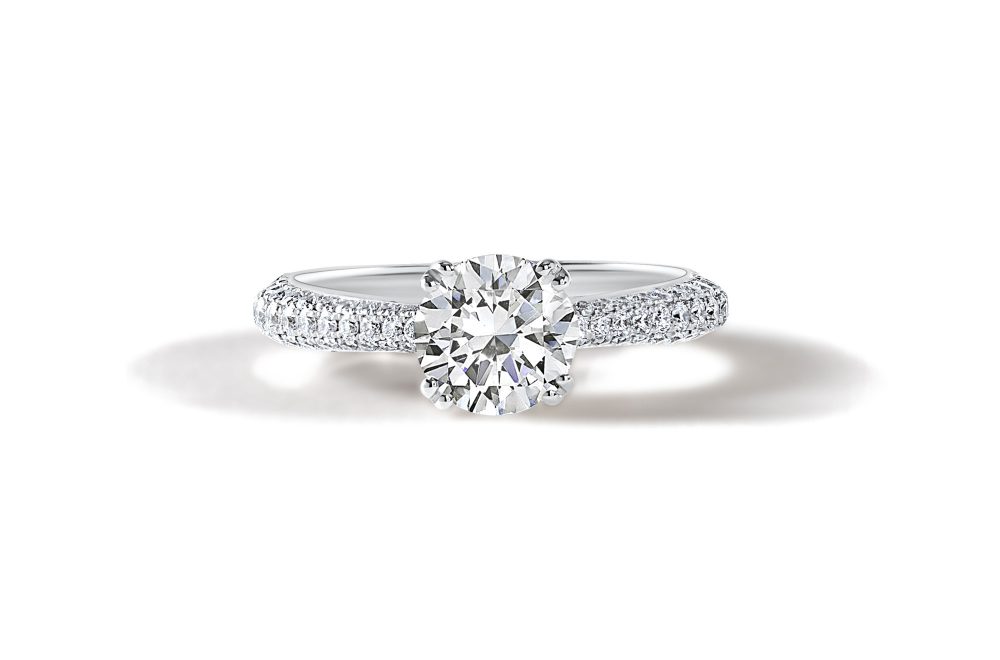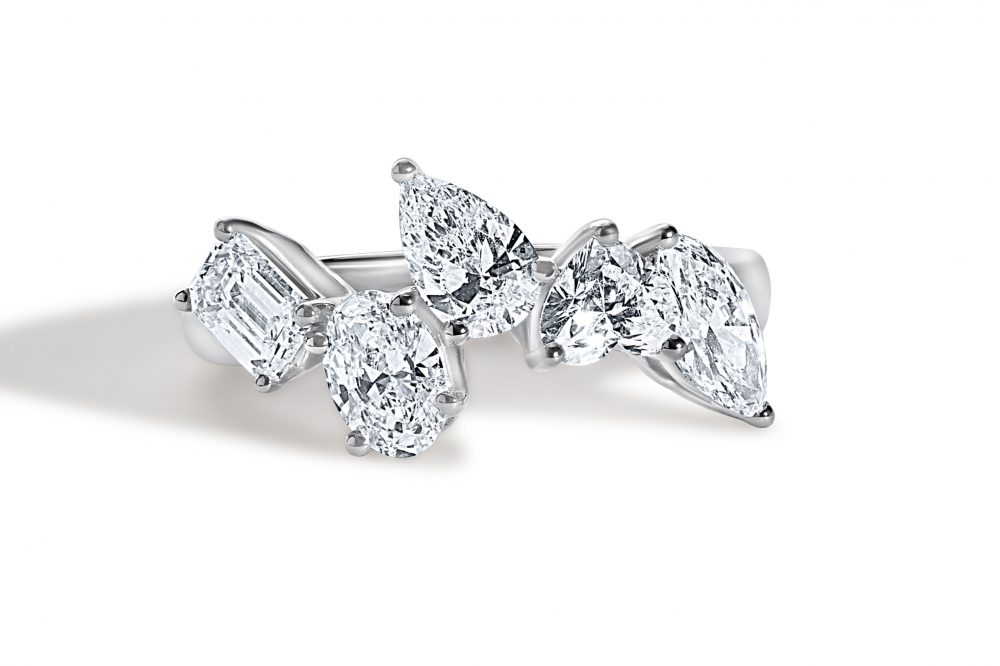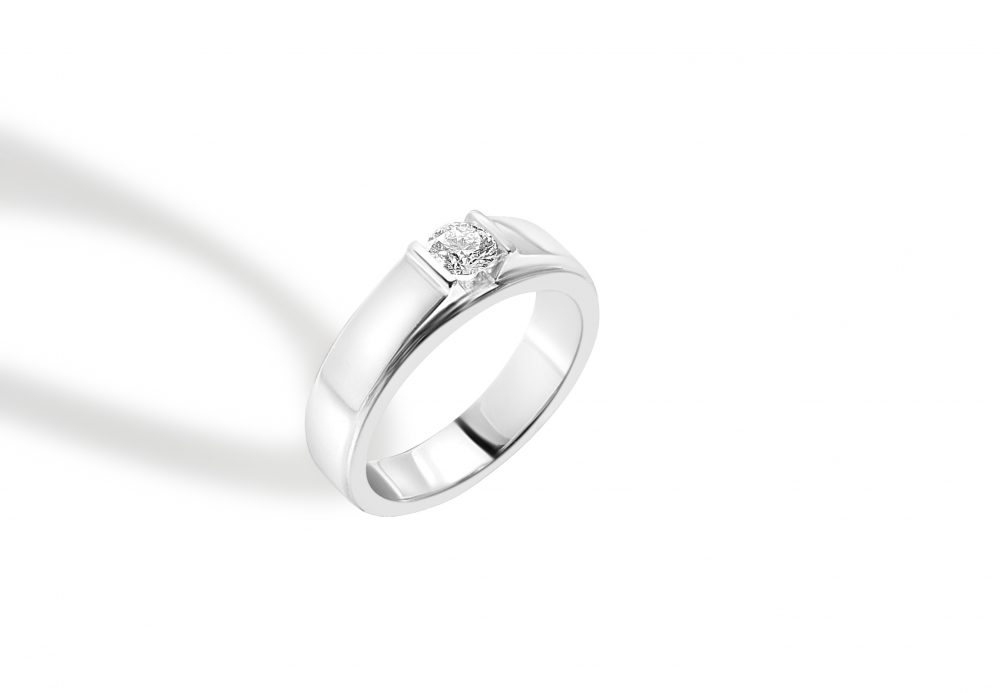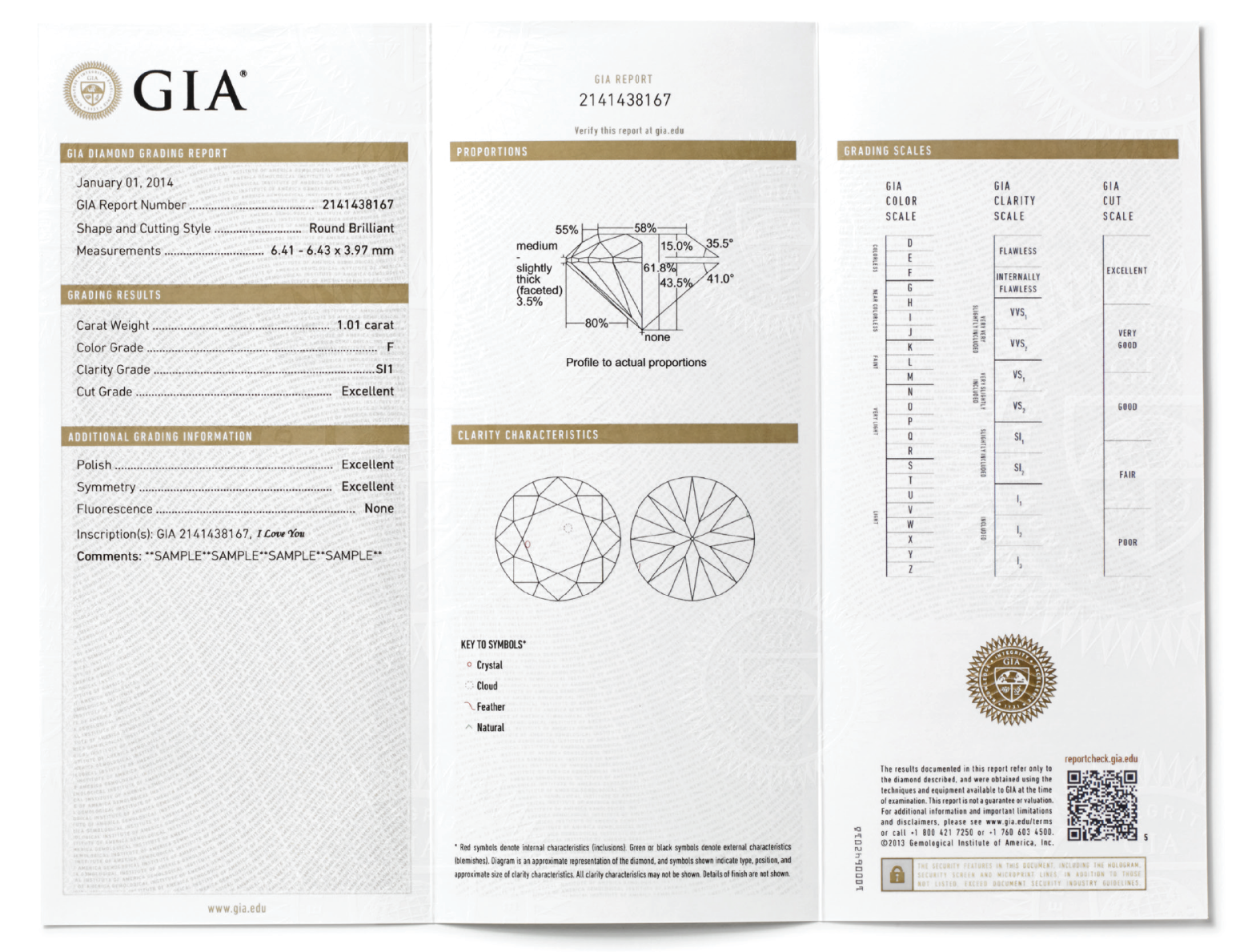
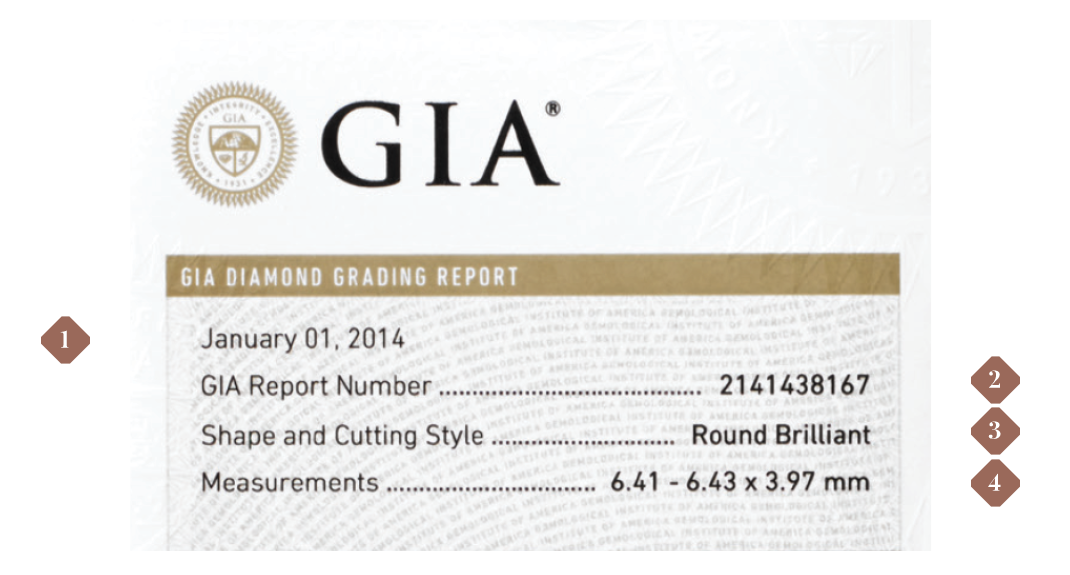
Part 1
-
1. Date
Date diamond was examined by GIA.
-
2. REPORT NUMBER
Unique GIA report number registered in GIA’s extensive global database.
-
3. SHAPE AND CUTTING STYLE
The outline of the diamond (shape) and the pattern of the facet arrangement (cutting style).
-
4. MEASUREMENTS
Diamond dimensions listed as “minimum diameter – maximum diameter x depth” for round diamonds and “length x width x depth” for fancy-shaped diamonds.
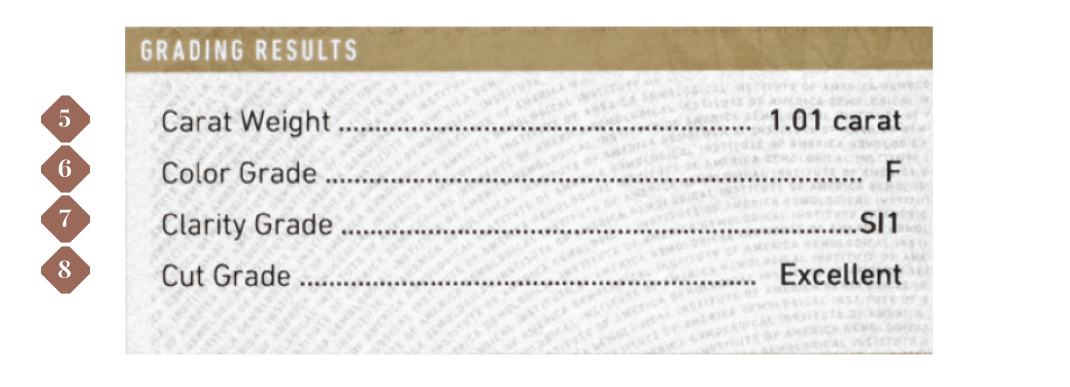
Part 2
-
5. CARAT WEIGHT
Weight given in carats, recorded to the nearest hundredth of a carat. One carat is equal to 1/5 of a gram.
-
6. Color Grade
The absence of color ranging from colorless to light yellow or brown when compared to GIA Master Color Comparison Diamonds. Graded on a D-to-Z scale. If “*” appears next to the color grade, a color treatment was detected.
-
7. CLARITY GRADE
The relative absence of inclusions and blemishes. Graded on a scale from Flawless to Included based on size, nature, number, position, and relief of characteristics visible under 10x magnification.
-
8. CUT GRADE
For standard, D-to-Z color, round brilliant diamonds. Cut grade incorporates the aspects of face-up appearance, design, and craftsmanship. Graded on a scale from Excellent to Poor.
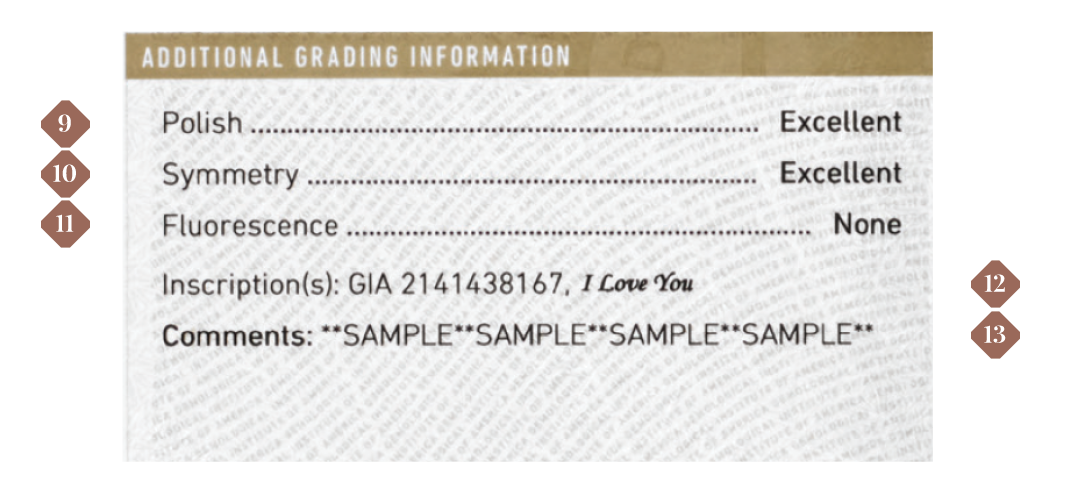
Part 3
-
9. POLISH
Smoothness of the Diamond’s surface, assessed on a scale ranging from Excellent to Poor.
-
10. SYMMETRY
Exactness of the diamond’s outline, and the shape, placement, and alignmentof its facets, assessed on a scale ranging from Excellent to Poor.
-
11. FLUORESCENCE
Strength and color of the diamond when viewed under long-wave ultraviolet light. A fluorescence description of “none” represents a range of fluorescence from Indiscernible to Very Faint. Used for identification purposes.
-
12. INSCRIPTION (S)
Any text, symbols, logos, or a unique GIA report number inscribed on the diamond’s girdle.
-
13. COMMENTS
Additional identifying characteristics or features that are not otherwise represented on the report. If a treatment is detected, such as laser drilling, it would be described here.
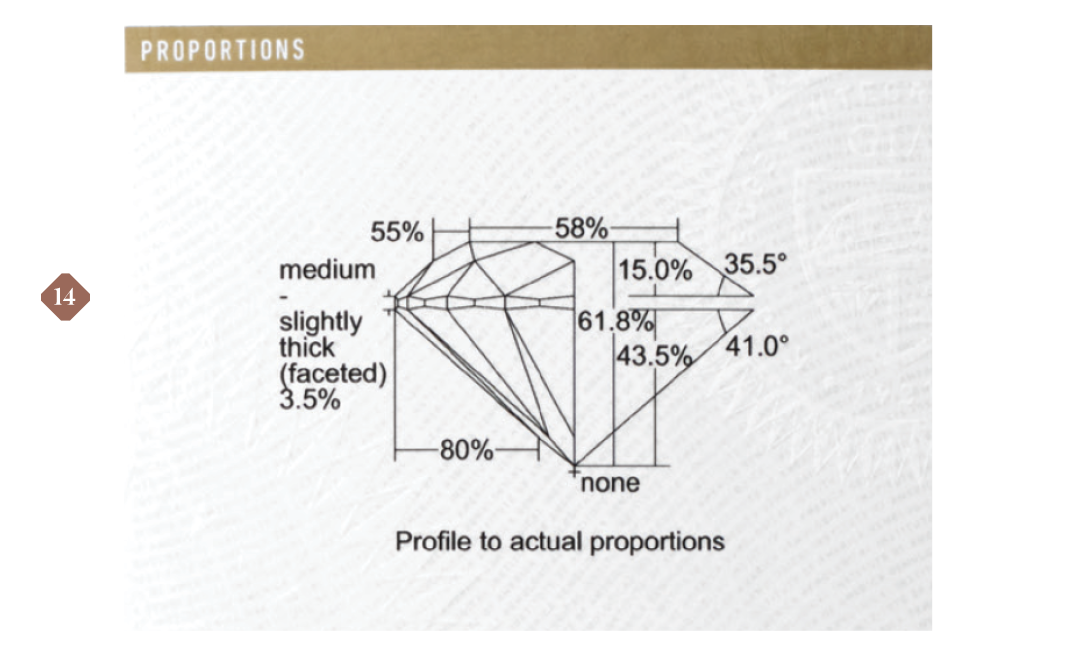
Part 4
-
14. PROPORTION DIAGRAM
Graphic profile representation of the diamond’s actual proportions.
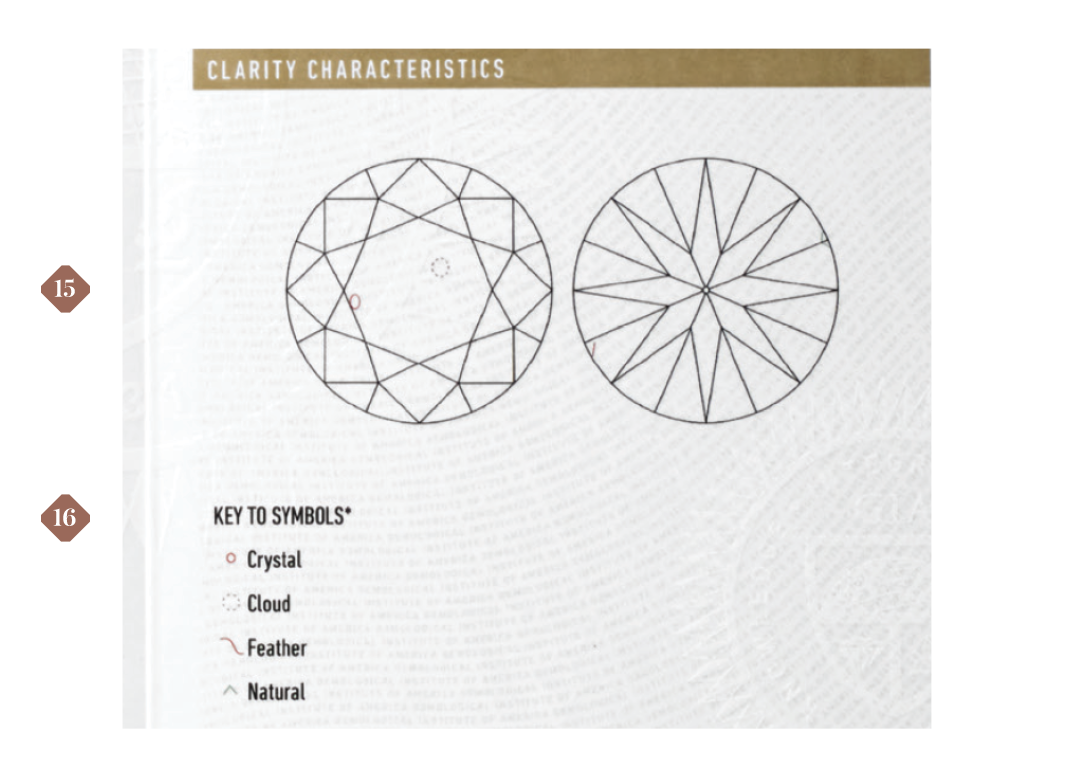
Part 5
-
15. PLOTTED DIAGRAM
Approximates the shape and cuttingayle of the diamond. Symbols indicate the type or nature, position, and the approximate size of a clarity characteristic.
-
16. KEY TO SYMBOLS
Lists the characteristics and symbols shown on the plotting diagram, if present.
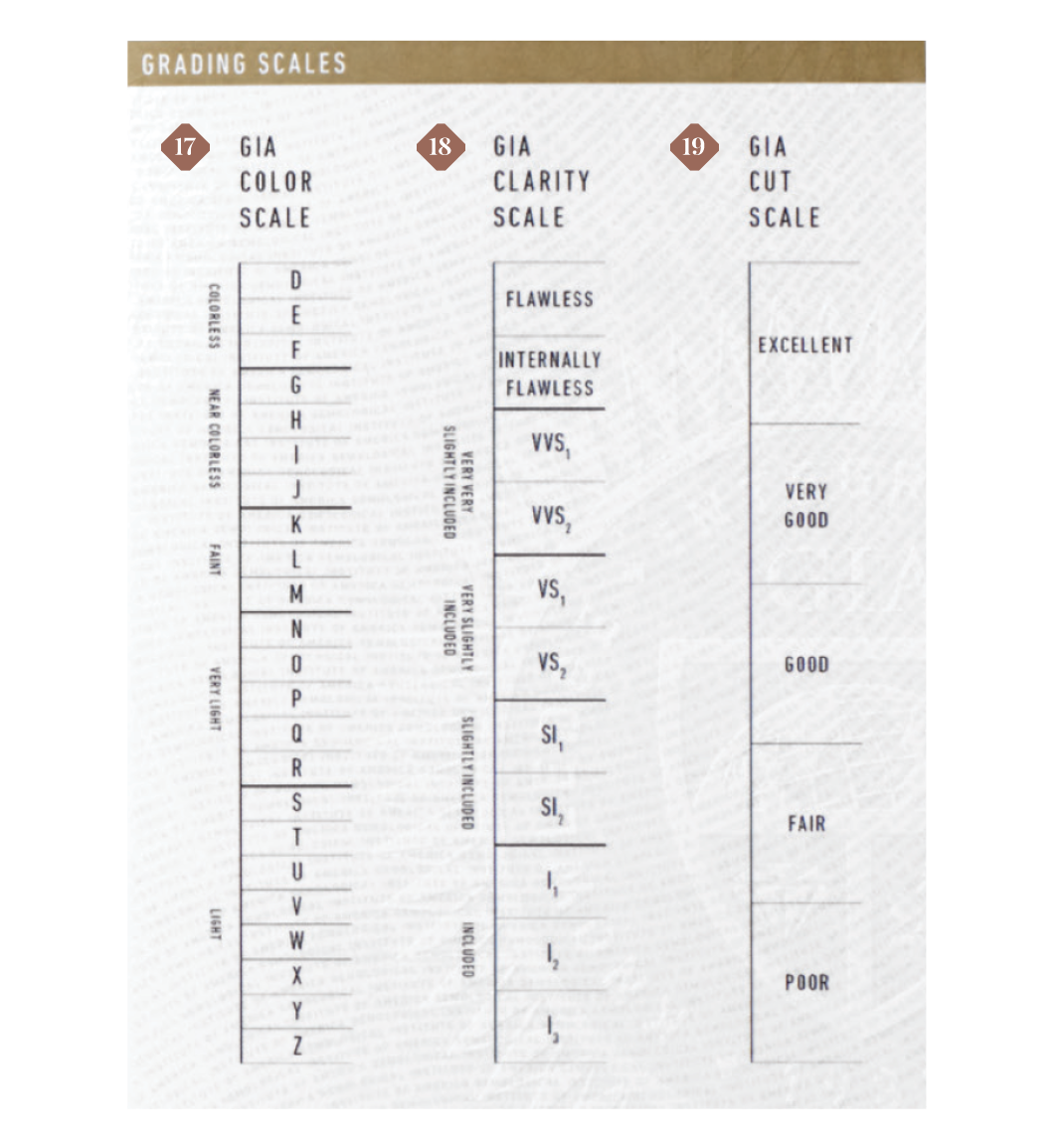
Part 6
-
17. GIA COLOR SCALE
Illustrates the GIA Color grades and their relative positions in the GIA Diamond Color Grading System.
-
18. GIA CLARITY SCALE
Illustrates the GIA Clarity grades and their relative positions in the GIA Diamond Clarity Grading System.
-
19. GIA CUT SCALE
Illustrates the GIA Cut grades and their relative position in the GIA Diamond Cut Grading System. Available for standard round brilliant cut diamonds in the D-to-Z color range and Flawless-to-I3 clarity range.
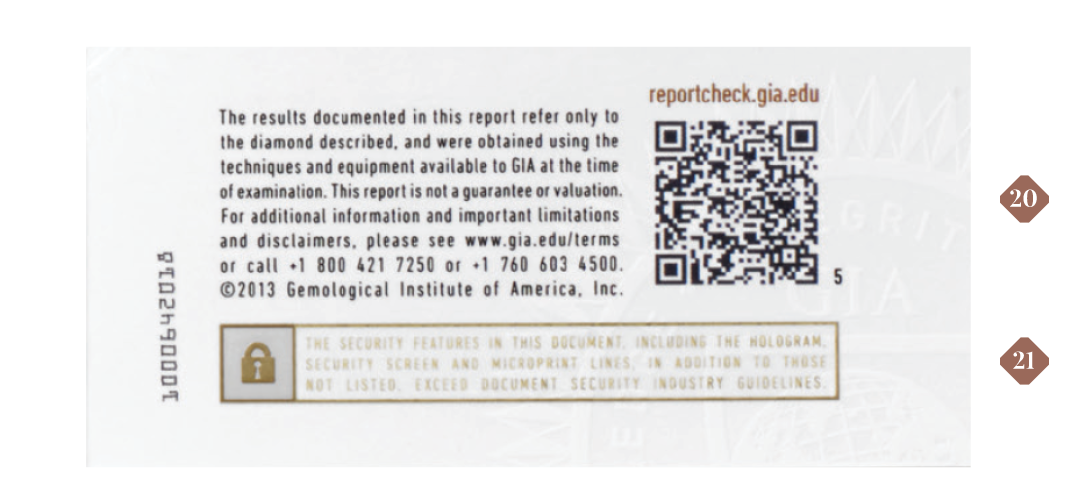
Part 7
-
20. QR CODE
A two-dimensional barcode that, when scanned, verifies data on the report against the GIA database.
-
21. SECURITY FEATURES
Microprinting, security screens, watermarks, a two-dimensional barcode, a hologram, and sheet numbering safeguard report integrity and facilitate document authentication.

